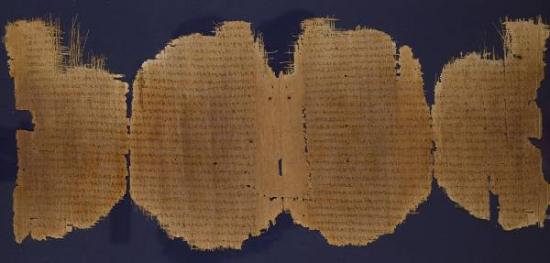Fragments of Mark's Gospel May Date to 1st Century
John Farrell
Source - http://www.forbes.com/sites/johnfarrell/2012/02/27/fragments-of-marks-gospel-may-date-to-1st-century/
The jury is out on this for a while, but a recent archaeological discovery could represent the oldest surviving copy of the Gospels.
According to Bible scholar Daniel B. Wallace of the Dallas Theological Seminary, fragments from the Gospel of Mark may date to as early as the late first century.
The claim comes well in advance of the official report to be published next year. But according to the Christian Today India report by Stoyan Zaimov:
Wallace announced his findings at UNC Chapel Hill on Feb. 1, 2012, during a debate in front of 1,000 people, where he unveiled that seven New Testament papyri had recently been discovered – six of them he said were probably from the second century, and one of them, the Gospel of Mark, probably from the first. The records will only be published next year, however… Wallace explained that the fragment was dated by one of the world’s leading paleographers. The oldest manuscript that had Mark in it was Papyrus 45 (P45), from the early third century (c. AD 200–250). This new fragment would predate P45 by 100 to 150 years, almost certainly placing it in the first century and making it the oldest of its kind, according to the professor.

Papyrus 45
Dating ancient manuscripts is a complicated business, and the margin for error can be … decades. John Byron of the Ashland Theological Seminary writes, “As we have seen many, many times before, artifacts and manuscripts that surface with fantastic claims tend to be much less than they are claimed to be.”
Larry Hurtado, retired professor of New Testament studies at University of Edinburgh agrees: “Expert palaeographers often disagree over a given item by as much as a century or more. It’s never wise to rest much upon one judgement, and confidence will be enhanced only when various experts have been given full access to the items.”
This is a fascinating field, but the limits of paleography are also frustrating (at least to me). I can’t help wondering whether some new technology might offer ways to physically date the papyri (without damaging them).
UPDATE : Professor Wallace has added more detail to the methodology of paleographic dating: “Paleographers use a variety of means for ascertaining the dates of manuscripts,” he writes in an email to me. “For Greek manuscripts (which this fragment was written in), the closest date-range that paleographers can determine is about 50 years, and this more so with ancient manuscripts than with medieval ones (where the range is broader still). The single most important key to dating is usually the handwriting, since it evolved over the centuries in discernible patterns.”
Some ancient manuscripts are indeed dated by the author (e.g., ‘This deed was written in the third year of the reign of Augustus’), he added, but most—especially biblical manuscripts—are not.
“The handwriting is not as subjective as it sounds,” he writes. “Even non-experts today recognize that the Declaration of Independence was not written in the 20th century. Ligatures (the joining of two letters like a and e in the older British spelling of archaeology), size and shape of letters, the position of the letters in relation to the lines, etc. were not stable features. By comparing undated manuscripts with dated ones, we are able to pinpoint more exactly when certain characteristics were in vogue. The cumulative evidence then suggests the range.”
As for direct physical methods for dating, Wallace says that radiocarbon dating has not been employed for Greek manuscripts to any significant degree, “largely because until recently it would necessarily destroy part of the manuscript.”